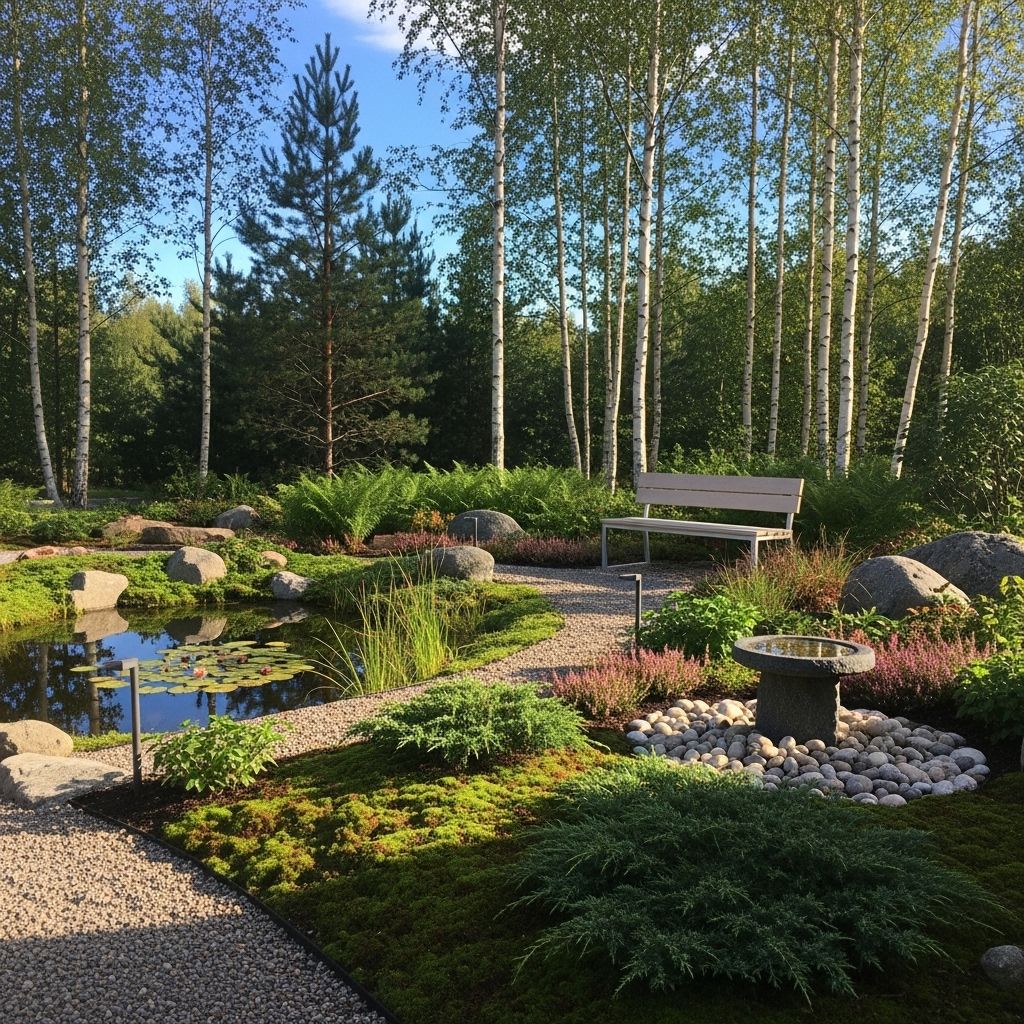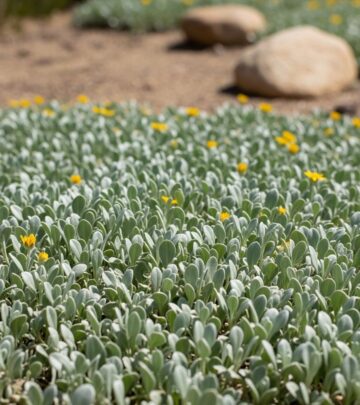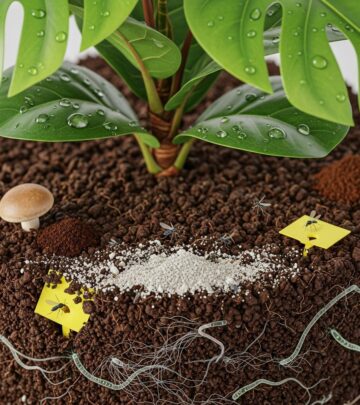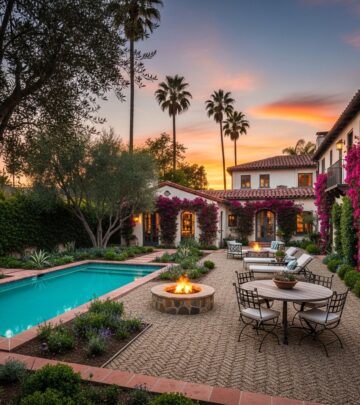Scandinavian Garden Design: 6 Expert Tips For A Swedish Oasis
Discover the serene yet striking beauty that defines Swedish garden design, where nature and innovation converge.

Image: HearthJunction Design Team
Northern Star: A Journey Through Sweden’s Gardens
Swedish gardens, with their quiet beauty and seamless integration with the wild, present a living canvas that reflects the country’s unique relationship with nature. From rustic cottages tucked into the countryside to contemporary urban oases, Sweden’s landscapes stand apart—not by mimicking the manicured lawns of England or the ornate parterres of France, but by embracing their own honest materials, a deep sense of place, and a respect for the native environment.
The Roots of Swedish Garden Design
“Gardening in Sweden is a rather new field,” explains Ulf Nordfjell, a leading Swedish landscape designer. Unlike centuries-old traditions found elsewhere in Europe, Swedish gardens began to take shape seriously only after World War II, when the need to grow vegetables spurred a practical approach to outdoor spaces. This utilitarian beginning led to a style deeply influenced by nature, where gardens often double as summer sanctuaries—a blend of nurture and wildness more akin to a natural retreat than a formal showpiece.
Defining Characteristics of Swedish Gardens
- Naturalism Over Formality: Gardens are seen as an extension of the landscape, favoring organic forms over rigid geometry.
- Material Honesty: Timber, steel, granite, and locally sourced materials are used to harmonize the designed space with its surroundings.
- Wild and Cultivated in Harmony: Native grasses, wildflowers, and foraged foods like strawberries thrive alongside cultivated roses and structured evergreens.
- Seasonal Living: Outdoor spaces are enjoyed principally during the brief, intense Swedish summer, making every sunny moment precious.
The Swedish Garden Experience: Where Interior Meets Exterior
Swedish homes often blur the distinction between interior and garden. Large windows, wide terraces, and inviting patios extend living spaces into the outdoors, turning even small gardens or balconies into vital extensions of daily life. The practical Scandinavian approach ensures outdoor areas are as inviting and comfortable as their indoor counterparts, often featuring minimal, functional furniture and textiles like wool or linen to ward off the Nordic chill.
Living with Nature: The Swedish Way
- Emphasis on Friluftsliv: The Scandinavian philosophy of ‘friluftsliv’—open-air living—lies at the heart of every Swedish garden. Rather than using gardens to demonstrate horticultural prowess, Swedes cultivate them as places to connect with family, nature, and themselves.
- Wilderness Encroaching: Many gardens allow wild edges to remain, with meadows, birch groves, and native pines left untouched as a backdrop to curated spaces.
Materials and Structure: Understated Elegance
Timber, steel, granite, and unpolished stone are hallmarks of Swedish garden construction. These honest materials age gracefully in the northern climate, offering texture and permanence without overpowering the landscape. Raised stone beds define planting areas, while gravel paths and wooden decks create welcoming routes through the garden. The result is a subtle dialogue between permanence and change—a space that feels both designed and evolved.
- Stone and Granite: Used for walls, pathways, and raised beds, these materials create structure while blending perfectly with the natural terrain.
- Wood: Untreated or lightly finished timber is a favored choice for decks, fences, and pergolas, weathering beautifully over time.
- Steel: Adds a modern edge—whether in sleek planters, edging, or water features—contrasting with softer plantings while standing up to the climate.
Planting Design: Less is More
Contrary to the lush, layered planting of English gardens, Swedish landscapes thrive on restraint. Carefully chosen species—often native and drought-tolerant—are planted in drifts, allowing the natural forms and subtle hues to take center stage. Lawns, if included at all, tend to be small patches or left as wild grass, while perennial beds are defined by soft transitions and a soothing palette of whites, blues, and greens.
Signature Swedish Plants
- Birch Trees
- Pines and Spruces
- Wild Grasses and Sedges
- Strawberries and Wild Berries
- Roses (especially hardy, old-fashioned varieties)
- Meadow flowers: Campion, Bluebell, Cow Parsley
Contemporary Swedish Garden Design: Visionaries and Trends
The influence of Swedish designers such as Ulf Nordfjell and Annika Zetterman has brought the country’s unique approach to an international audience. Nordfjell’s award-winning gardens fuse modern sculpture and minimalist planting, while Zetterman’s “New Nordic Gardens” highlight the importance of sustainability and nature-inspired forms. Both celebrate the use of local materials, simple plant palettes, and the integration of water elements—reflecting pools, rills, and natural swimming ponds that mirror the sky.
Modern Scandinavian Design Principles
- Clean Lines and Geometry: Beds and lawns are often squared off, providing order amidst the informality.
- Minimal Ornamentation: Restraint in both color and detail keeps gardens feeling serene and uncluttered.
- Functional Elegance: Every feature, from seating to pathways to lighting, is chosen for both use and beauty.
- Seamless Indoor-Outdoor Living: Terraces, sliding doors, and even outdoor kitchens extend the home into the garden.
Scandinavian Garden Decoration & Outdoor Living
Decor in a Swedish garden is never fussy. Instead, accents are thoughtfully chosen to complement, never overshadow, the landscape. Fire pits, simple lanterns, and rough-hewn benches create a welcoming ambience. In keeping with the hygge ethos, plush throws or sheepskins might appear on seating, while planters—in wood, concrete, or aged metal—offer focal points that reinforce the garden’s natural palette.
Scandi-Style Decor Essentials
- Plant and Flower Pots: Used sparingly, favoring natural materials like jute, seagrass, wood, or concrete. Arranged in groups for visual impact on balconies or patios.
- Fire Bowls and Lanterns: Offer warmth and light, extending outdoor enjoyment into the dusk.
- Minimalist Planters: Prefer large, bold containers over small, ornate ones. Vintage touches, such as old watering cans or pewter tubs, add rustic charm.
- Outdoor Textiles: Cozy throws and cushions in neutral or muted tones enhance comfort and capture the Scandinavian sense of well-being.
Color, Form, and Atmosphere
The color scheme of a Swedish garden is deliberately understated. Soft greens, silvery blues, muted grays, and the occasional splash of white or gentle pink define both plants and decor. Shapes are organic and flowing—reflecting the curves of the natural world and avoiding artificial symmetry.
| Element | Swedish Gardens | British/French Gardens |
|---|---|---|
| Main Materials | Timber, granite, steel, stone | Limestone, marble, clay |
| Planting Style | Naturalistic, native species, loose drifts | Manicured, formal borders, exotic plants |
| Decoration | Minimal, practical, natural textures | Ornate, classical statues, elaborate potting |
| Atmosphere | Tranquil, wild yet intentional | Orderly, decorative, prestigious |
Seasonality and Sustainability
Every Swedish garden is, by necessity, a response to the climate. The short, exuberant summers are balanced by long, dark winters, demanding hardy plants and thoughtful design. Sustainability is at the core, with drought-tolerant species, natural filtration for pools, composting, and a conscious avoidance of chemicals. Even urban gardens prioritize ecological health, using permeable surfaces and rain gardens to manage water and support biodiversity.
Garden Retreats: The Swedish Summer House
Many Swedes retreat to sommarstuga, or summer houses, during the warmest months. These country gardens are intimate, often rustic, and almost always blend vegetable plots, berry patches, and wilderness—manifesting a desire for simplicity and a slower pace. Here, the relationship with land is less about control and more about stewardship, echoing a cultural reverence for the wild.
Creating a Swedish Garden: Design Tips & Inspirations
- Start with a naturalistic approach—allow wild grasses, native trees, and meadows to dominate where possible.
- Incorporate honest materials: choose local stone, rough timber, and unadorned steel for hardscaping.
- Use restrained, harmonious plant palettes with an emphasis on hardy perennials, grasses, and berries.
- Design with intent but avoid formality—let shapes flow, edges blur, and nature inform structure.
- Choose decor that adds warmth and comfort without disrupting the natural atmosphere: think fire bowls, simple lanterns, and cozy textiles.
- Build for the seasons: maximize use in summer but design features to endure winter’s darkness and cold.
Frequently Asked Questions (FAQs)
Q: Can I create a Swedish-style garden in a small space?
A: Absolutely. Even balconies and tiny patios can embrace the Swedish spirit by using groupings of natural-material pots, small fire bowls, and native plants. Focus on simplicity and let each element have breathing room.
Q: What are the best plants for a Nordic garden vibe?
A: Birch and pine trees, ornamental grasses, strawberries, meadow wildflowers, and roses suited to colder climates all evoke the Swedish look.
Q: How do Swedish gardens handle the cold and short summers?
A: With hardy, low-maintenance plants, naturalistic design that tolerates some wilderness, and sustainable practices like composting and minimal chemical use.
Q: What decor should I avoid in a Swedish-inspired garden?
A: Avoid ornate statuary, intricate floral patterns, or brightly colored plastic. Stick to natural tones, simple shapes, and materials that age gracefully.
Q: How do you blend a Swedish garden with modern architecture?
A: Use minimal, geometric hardscaping; integrate glass, steel, or concrete accents; and allow natural plantings to soften the lines and connect the home to its setting.
Conclusion: The Lasting Influence of Swedish Gardens
Swedish garden design is more than a style—it’s a way of life that reveres simplicity, sustainability, and the healing power of nature. Its quiet confidence has begun to shape gardens across the world, inviting everyone to experience the restorative joy found at the edge of wildness and design. Whether you have a country plot, city terrace, or cozy balcony, the Swedish approach offers enduring inspiration for living beautifully with nature.
References
- https://www.gardendesign.com/abroad/sweden.html
- https://www.homesandgardens.com/gardens/how-to-create-a-scandi-style-garden
- https://www.scandi.co.uk/lifestyle/scandinavian-garden/
- https://www.sbevolutionlandscape.com/five-basics-of-scandinavian-landscape-design/
- https://edwardgeorgelondon.com/how-to-design-a-scandinavian-garden/
Read full bio of Shinta












